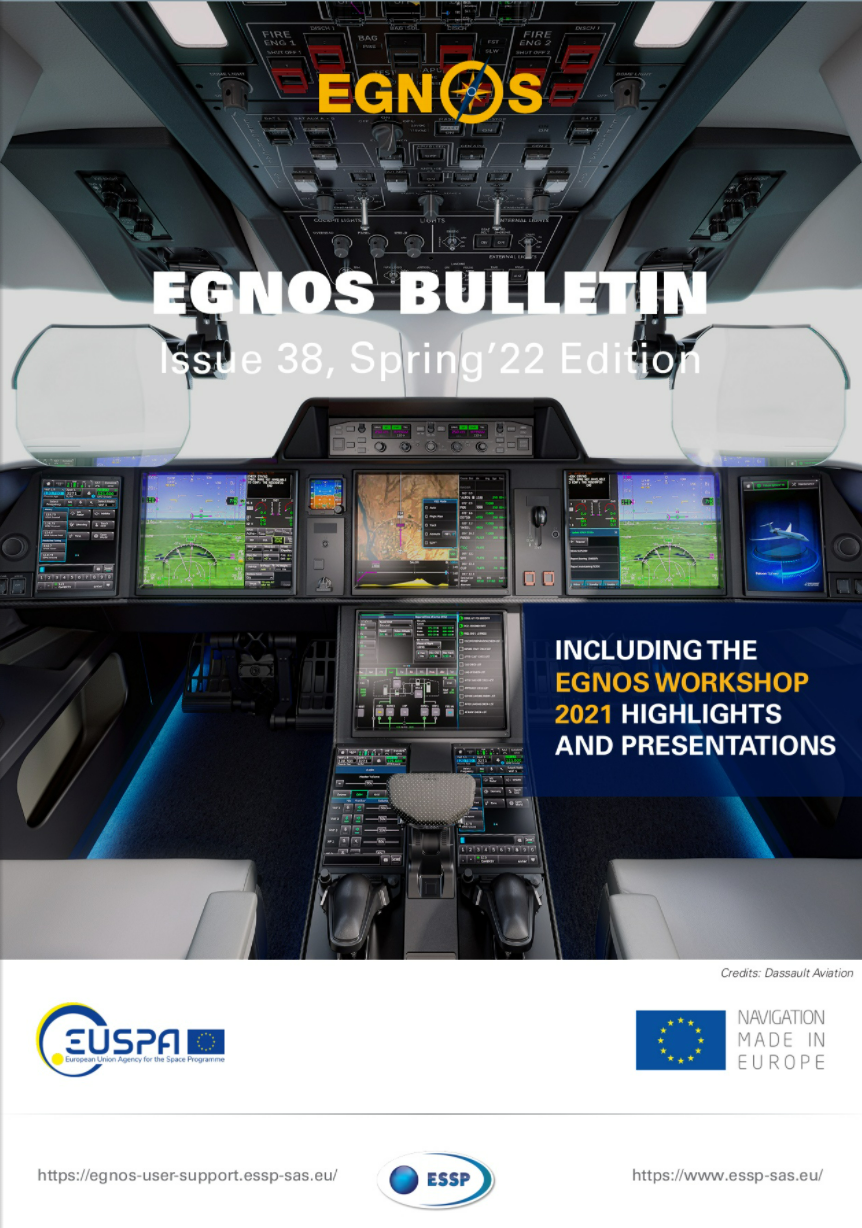The European Geostationary Navigation Overlay Service, EGNOS, provides some great safety benefits for the GA Community. One of these is the ability to use the system to make instrument approaches to non-instrument runways.
Following the publication of the implemenation report developed by EASA and the EU Agency for the Space Programme (EUSPA) in 2019, as of November 2021 there is now a second document that provides the supporting Safety Assessment Guidelines to help people managing airspace and aerodromes with the implementation.
Check out the Spring 22 Edition of the EGNOS Bulletin
The EGNOS Bulletin Issue 38, Spring'22 Edition has some great articles to address EGNOS in support of approaches to non-instrument runways, EGNOS success stories, Garmin’s perspective on EGNOS, EGNOS Workshop 2021 highlights, and more.

The benefits of EGNOS and the EASA GA Roadmap
Historically, the situation in GA is that pilots rely on flying VFR to smaller aerodromes that have limited ground infrastructure. EGNOS is a perfect technology to enable the implementation of instrument flight procedures for the general aviation community that brings additional operational and safety benefits without the need to invest in ground navigation and additional infrastructure. Even though the GA community undertakes millions of flights on aircraft equipped with GNSS-receivers, it was not taking full advantage of the technology.
The original EASA GA Roadmap included the strategic objective to increased IFR operations for GA and making full use of the capabilities of EGNOS has been a key part of that. You can read more about how GNSS-based instrument operations for GA function in Chapter 2 from Page 6 of the first PDF attachment at the bottom of the page.
The new Safety Assessment Guidelines
The latest document in the second PDF, is intended to be a supportive guidance material to help stakeholders in the aviation community to perform safety assessments in the local implementation process of EGNOS-based approaches for GA. As previously mentioned the target audience of this are people initiating changes to the airspace. This includes airspace users, aerodrome operators, aerodrome owners, and National Competent Authorities (NCAs) willing to support the implementation of IFP procedures based on the European Geostationary Navigation Overlay Service (EGNOS) in a General Aviation environment.
This is a vital next step in supporting safer flying for the GA community. Further updates will be posted to this page.


You are not allowed to comment on content in a group you are not member of.
General Aviation